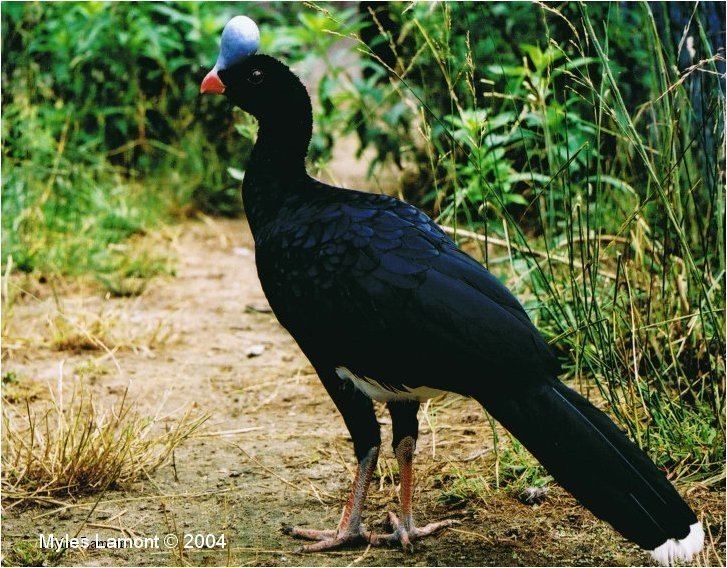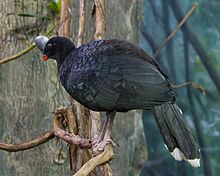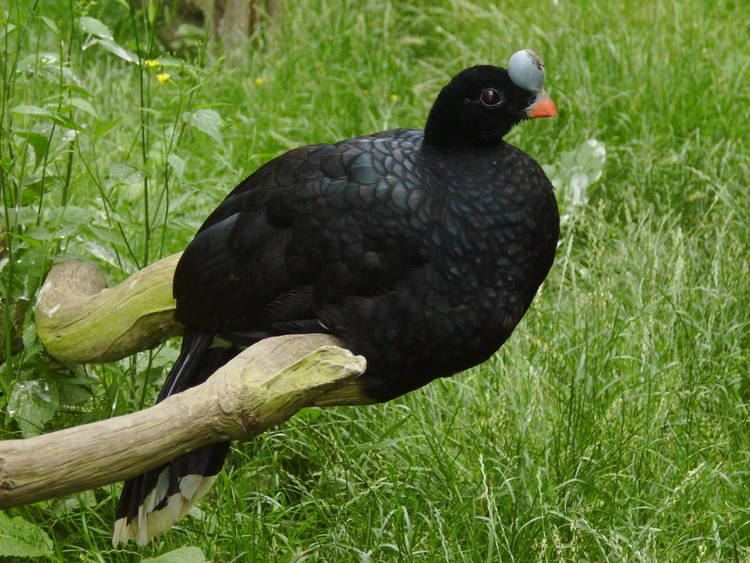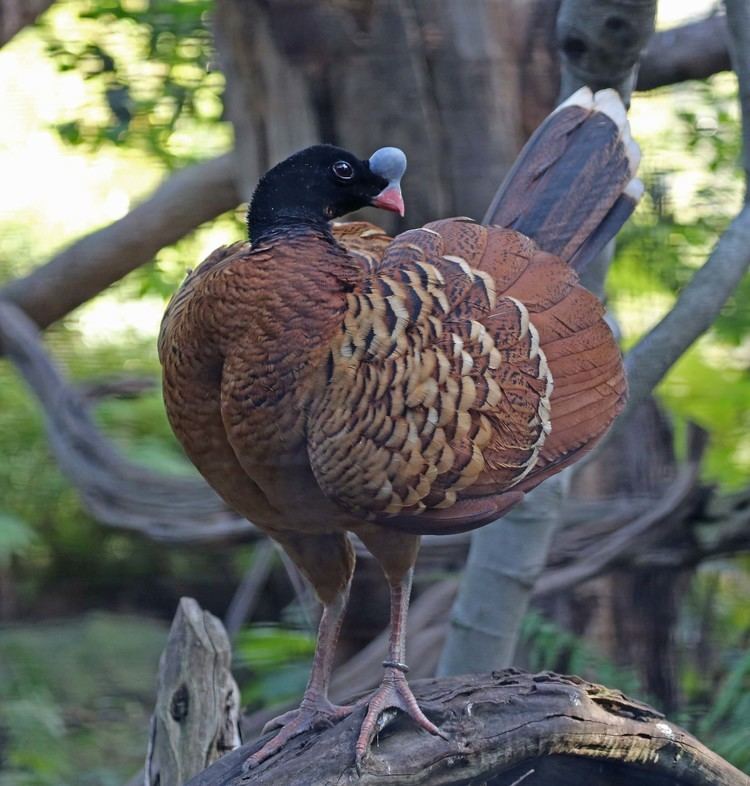Higher classification Pauxi | Phylum Chordata Scientific name Pauxi pauxi Rank Species | |
 | ||
Similar | ||
Helmeted curassow
The helmeted curassow or northern helmeted curassow, (Pauxi pauxi) is a large terrestrial bird in the Cracidae family found in the subtropical cloud-forest in steep, mountainous regions of western Venezuela and northern Colombia. There are two subspecies found in different mountain ranges. It is a mostly black bird with a white tip to its tail, a red bill and a distinctive grey casque on its forehead. The population of this bird is in decline and the International Union for Conservation of Nature has rated its conservation status as "endangered".
Contents
- Helmeted curassow
- Northern helmeted curassow chick hatched at white oak
- Description
- Distribution
- Status
- Taxonomy
- References
Northern helmeted curassow chick hatched at white oak
Description

It is a large terrestrial black curassow with a small head, large bluish grey casque on forehead, red bill, white-tipped tail feathers, greenish glossed mantle and breast feathers, and white below. Both sexes are similar. Length in adult birds can vary from 80 to 100 cm (31 to 39 in). The male, at 3.6 kg (8 lbs), is larger than the female, at 2.6 kg (5.8 lbs). Among standard measurements, the wing chord is 36.3 to 42.7 cm (14.3 to 16.8 in), the tail is 30.4 to 36.2 cm (12.0 to 14.3 in) and the tarsus is 8.9 to 11.2 cm (3.5 to 4.4 in). Some rare rufous morph female has a black barred and reddish brown plumage. For some time, it also contained the horned curassow taxa as subspecies. Nowadays its southern congener is considered a distinct species P. unicornis.
Distribution

One of the largest birds in its habitat, the helmeted curassow is distributed in the eastern Andes of Venezuela and Colombia. The diet consists mainly of seeds, fruits, insects and small animals. The female lays two cream-colored eggs and incubates them for about 30 days.
Status

The helmeted curassow is listed on Appendix II of CITES. Formerly classified as an Vulnerable species by the IUCN, recent research shows that its numbers are decreasing more and more rapidly. It is consequently uplisted to Endangered status in 2008.
Taxonomy
There are two subspecies:
Their evolutionary history is not well researched compared to other curassows. The helmeted curassows probably are a lineage of Late Miocene (Tortonian–Messinian, about 8–7 million years ago) origin. This species' present-day distribution suggests that it became isolated some 6 million years ago as its mountain range uplifted. It is not known when gene flow between the subspecies ceased.
